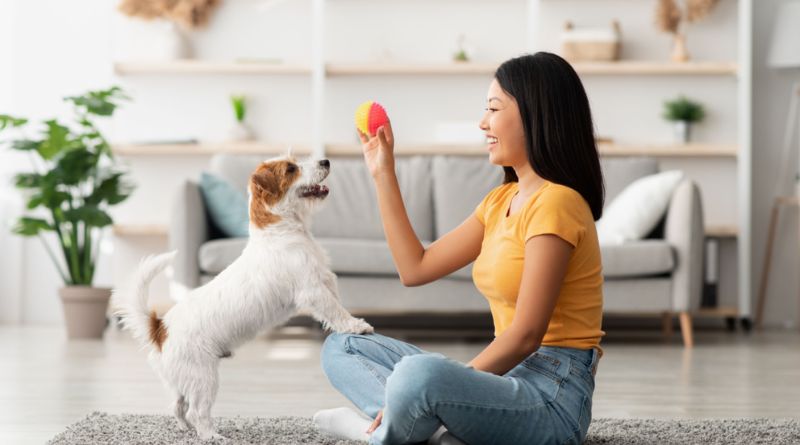Training a puppy can be a delightful yet challenging experience. The early stages of your puppy’s life are crucial for setting the foundation for good behavior and strong bonds. Implementing effective training strategies ensures your puppy grows into a well-mannered and happy dog. In this guide, we’ll explore ten proven strategies that will help you train your puppy successfully. From basic commands to socialization tips, these techniques will make the training process smoother and more enjoyable for both you and your furry friend.
10 Effective Strategies for Training Your Puppy
1. Start with Basic Commands
Teaching basic commands such as “sit,” “stay,” and “come” is essential. These commands are the foundation for more advanced training. Begin by using goodies and positive reinforcement to encourage your puppy. Keep training sessions short and consistent to maintain their attention and avoid frustration. With patience and persistence, your puppy will quickly learn these essential commands, making everyday interactions easier and more enjoyable.
2. Use Positive Reinforcement
Positive reinforcement is an effective strategy for puppy training. Treats, praise, and playing encourage your dog to repeat excellent behavior. Avoid using punishment since it might instill dread and anxiety. Instead, focus on reinforcing positive behaviors and ignoring or redirecting unwanted behaviors. This approach builds trust and strengthens the bond between you and your puppy, making training a positive experience.
3. Establish a Routine
Consistency is key in puppy training. Establishing a daily schedule allows your puppy to understand what is expected of them. Set up regular times for eating, potty breaks, playtime, and training sessions. A structured routine provides security and reduces anxiety for your puppy. Over time, they will learn to anticipate and respond to the schedule, making training more effective and efficient.
4. Socialize Your Puppy
Socialization is crucial for your puppy’s development. Expose them to various people, animals, environments, and situations to build their confidence and reduce fear. Arrange playdates with other dogs, take them to different places, and introduce them to new sounds and sights. Proper socialization prevents behavioral difficulties and ensures that your puppy develops into a well-adjusted adult dog.
5. Crate Training
Crate training is an effective way to provide your puppy with a safe and secure space. It aids in housebreaking and prevents destructive behavior when you’re not around.Introduce the crate gradually to create a good and comfortable environment. Treats and toys might help encourage your puppy to enter the kennel willingly. Avoid using the crate as a form of punishment, as it should be seen as a positive place.
6. Leash Training
Teaching your puppy to walk on a leash is essential for their safety and your convenience. Begin with a light leash and a comfortable collars or harnesses. Allow your puppy to get used to the leash indoors before taking them outside. Practice short walks in a controlled environment, rewarding your puppy for walking beside you without pulling. As your puppy’s comfort level grows, gradually increase the length and complexity of walks.
7. Addressing Biting and Chewing
Puppies explore the world with their mouths, which often leads to biting and chewing. Redirect these behaviors by providing appropriate chew toys and discouraging biting by yelping or saying “no” firmly. Avoid rough play that encourages biting and reward gentle behavior. Consistency is crucial in teaching your puppy what is acceptable to chew on and what is not.
8. Housebreaking
Housebreaking your puppy requires patience and consistency. Establish a designated potty area and take your puppy there regularly, especially after meals, playtime, and naps. Praise and treat them when they eliminate in the appropriate spot. If accidents happen indoors, clean them thoroughly to remove any scent traces. Over time, your puppy will learn to associate the designated area with bathroom breaks.
9. Teaching “Leave It” and “Drop It”
Teaching your puppy commands like “leave it” and “drop it” can prevent them from picking up harmful objects. Use incentives and encouragement to teach these commands. Practice with safe objects and gradually progress to more tempting items. Consistently reinforcing these commands helps keep your puppy safe and well-behaved during walks and playtime.
Also Read: How to Choose the Right Food for Your Pet
10. Be Patient and Consistent
Training a puppy takes time and effort. Patience and consistency are vital for success. Puppies have limited attention spans, so make training sessions quick and frequent. Celebrate small victories and avoid getting frustrated by setbacks. Remember that each puppy is special and may learn at its own rate. Stay positive, and with perseverance, your puppy will develop good habits and behavior.
Conclusion
Training your puppy effectively requires dedication, consistency, and a positive approach. By implementing these ten strategies, you can ensure a well-behaved and happy dog. Remember to start with basic commands, use positive reinforcement, and establish a routine. Socialization, crate training, and leash training are also essential components. Address biting and chewing, focus on housebreaking, and teach important commands like “leave it” and “drop it.” Above all, be patient and consistent throughout the training process. With these strategies, you’ll build a strong bond with your puppy and set them on the path to becoming a well-mannered adult dog.



